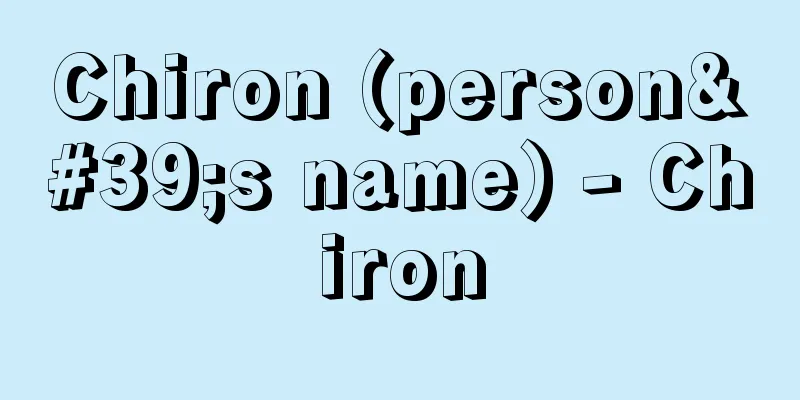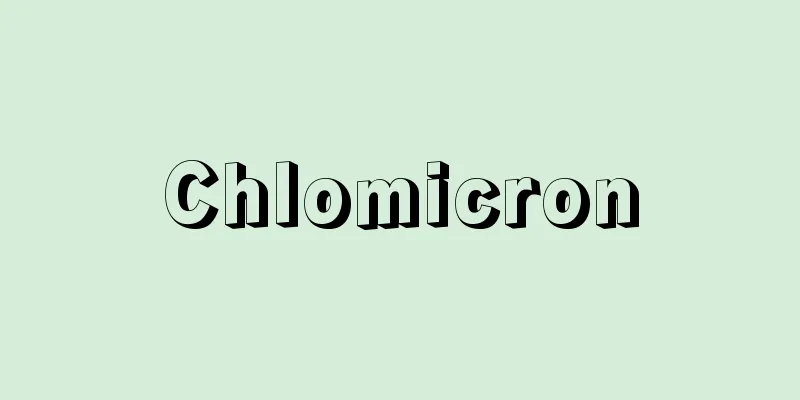Gion Festival

|
This is a festival at Yasaka Shrine in Gion-cho, Higashiyama Ward, Kyoto City. It is held every year from July 17th to 24th. Formerly it was called Gion-e or Gion-Goryo-e. It is counted as one of the three major festivals, along with the Kanda Festival in Tokyo and the Tenjin Festival in Osaka. Its origins date back to 869 (Jogan 11) during the Heian period, when an epidemic broke out across the country, and as a curse from Susanoo-no-Mikoto (Gozu Tenno), the deity enshrined at Yasaka Shrine, an imperial decree was issued to erect 66 hoko (floor poles) on June 7th, one for each province in the country, and on the 14th of the same month, boys from within Kyoto gathered at Shinsen-en Garden carrying portable shrines to hold a Goryoe ceremony and pray for the elimination of the epidemic, but there is also a theory that it began with a Goryoe ceremony held on June 14th in 970 (Tenroku 1) or 975 (Ten'en 3). It was temporarily discontinued during the Onin War (1467-1477), but broke out again, and during the Edo period, people competed with each other to make the most extravagant decorations on their hoko (floor poles). Since the Meiji era, the Yamaboko procession was held on both July 17th (first festival) and 24th (last festival), but in 1966 (Showa 41) it was merged and only held on the 17th. Currently, the Hanagasa procession is held on the 24th (the Yamaboko procession on the 24th was revived in 2014). The festival is centered around Yoiyama on the eve of the 16th, and the parade of the Yamahoko floats on the 17th and 24th, but prior to that there are other ceremonies such as Kippuiri (a meeting to decide on the rituals), the lottery ceremony (determining the order of the Yamahoko parade), the portable shrine washing, and the children's shrine visit. The portable shrine washing takes place on the night of July 10th, when the head of the shrine parishioners, the caretakers, brandishing large torches and paper lanterns, present the portable shrine, and in the middle of Shijo Ohashi Bridge, the priest dips a sakaki branch into the Kamo River and pours it onto the portable shrine before returning home. Also, from around the 11th, the assembly of the Yamahoko floats (Hoko-ken and Yama-ken) begins, and every night the people of the town gather to play Gion bayashi music. On the evening of the 16th, sacred lanterns are lit on the eaves of the houses, blue blinds are hung, historic carpets are laid out, and folding screens are hung around the houses in a display of splendor, earning the festival the nickname of the Byobu Festival. Lanterns are hung from the floats and mountains, making the spectacle even more beautiful. On this evening, the festival reaches its climax as crowds gather from far and near. The Sakimatsuri (pre-festival) is held on the following day, the 17th. In the morning, the Hoko floats are paraded around Shijo Karasuma, Shijo-dori, Kawaramachi-dori, and Oike-dori, with the Naginata Hoko at the front, following an order determined by lottery, accompanied by Gion music, before disbanding at Shinmachi Oike and returning to the town. Along the way, the lottery is revised at Shijo Sakai-cho. In the afternoon, starting from dusk, three mikoshi (portable shrines) parade through the parishioners' district and are presented to the Otabisho (temple) at Shijo Kyogoku. The five floats in the Hoko float parade, the Naginata Hoko, Kanko Hoko, Houka Hoko, Iwatoyama, and Fune Hoko, follow a set order that is not determined by lottery. In addition to the above, there are also the Niwatori Hoko, Tsuki Hoko, Kikusui Hoko, Ayagasa Hoko, and the Shijo Kasa Hoko, which had not participated in the parade since its revival in 1985, but resumed in 1988, bringing the total to nine. In addition to Iwatoyama, there are also the Uradeyama, Ushi Tenjinyama (Aburatenjinyama), Taishiyama, Bakurakutenyama, Hakugayama, Kakkyoyama, Yamabushiyama, Arare Tenjinyama, Tokusayama, Ashikariyama, Mousouyama, Hoshoyama, and Tourouyama, for a total of 14 floats. The Gion bayashi music has different tunes for the roads and for the floats and the mountains. A boy of about 10 years old, wearing heavy makeup, a golden crown on his head, and holding a kakko (a Japanese drum) ascends to the top of the float. This boy is called the "Hoko no Chigo." At the Atomatsuri on the 24th, a Yamahoko procession takes place in the morning. Starting with Hashibenkeiyama, the procession order is fixed, followed by Kitakannonyama, Minamikannonyama, and Ofunahoko, which is the last float and was revived in 2014 (Heisei 26), followed by Koiyama, Ennogyojayama, Kuronushiyama, Hachimanyama, Suzukayama, and Jomyoyama (Takayama, which is scheduled to be revived in 2022, has been undergoing a Karabitsu procession since 2019, containing a hanging scroll instead of a sacred object). The procession follows the opposite course to the Maematsuri. At almost the same time as the procession, a Hanagasa procession takes place. Around the 10 or so umbrella poles, parishioner groups prepare heron dances and dengaku, which are then performed from the main shrine to the city hall, Shijo Otabisho, and other places before returning to the main shrine. Each dance is dedicated in front of the main hall. The Gion Festival at Yasaka Shrine is said to be the origin of the summer festival format centered around purification rituals. It has also had a major influence on other festivals in terms of the festival format, festival music, and the structure of the floats. [Toshihiko Uda] In 2009, it was registered separately as an intangible cultural heritage by UNESCO (United Nations Educational, Scientific and Cultural Organization) as the "Yamahoko Events of the Kyoto Gion Festival." In 2016, it was re-registered as one of the "Yama, Hoko and Yatai Events," a collection of 33 festival events centered around the parade of floats from all over Japan. [Editorial Department, February 16, 2017] [References] | | | | | | | | | | | |Source: Shogakukan Encyclopedia Nipponica About Encyclopedia Nipponica Information | Legend |
|
京都市東山区祇園町に所在する八坂(やさか)神社の祭礼。毎年7月17日から24日まで行われる。以前は祇園会(え)あるいは祇園御霊会(ごりょうえ)ともいった。東京の神田祭、大阪の天神祭とともに三大祭に数えられている。 起源は、平安時代の869年(貞観11)に全国に疫病が流行したため、これを八坂神社の祭神素戔嗚尊(すさのおのみこと)(牛頭天王(ごずてんのう))の祟(たた)りとして、勅命により6月7日全国の国数に準じて鉾(ほこ)66本を立て、同月14日洛中(らくちゅう)の男児が神輿(みこし)を奉じて神泉苑(えん)に集まり、御霊会を修して除疫を祈ったことによるとされるが、970年(天禄1)あるいは975(天延3)の6月14日に行われた御霊会から始まるという説もある。応仁(おうにん)の乱(1467~1477)で一時中絶したが、またおこり、江戸時代に山鉾の飾りつけなどに豪華を競った。明治以後は7月17日(前祭)と24日(後祭)の両日に山鉾(やまぼこ)巡行が行われたが、1966年(昭和41)に合併されて17日のみとなった。現在は24日に花傘巡行が行われる(2014年に、24日の山鉾巡行は復活した)。 祭りは前夜16日の宵山(よいやま)と当日17日、24日の山鉾巡行が中心であるが、それに先だち、吉符入(きっぷいり)(神事の打合せ)、くじ取式(山鉾巡行順位の決定)、神輿洗、稚児(ちご)社参などの儀がある。神輿洗は7月10日の夜、氏子総代世話方らが大松明(たいまつ)、提灯(ちょうちん)を振りかざして神輿を奉じ、四条大橋の中央で神職が榊(さかき)を鴨(かも)川に浸して神輿にそそぎ終わって還幸する。また11日ごろからは、山鉾の組立て(鉾建・山建)も始められ、毎夜町内の人々が集まって祇園囃子(ばやし)を奏する。16日の宵山には、家々の軒に神灯がともされ、青簾(あおすだれ)をかけ、由緒ありげな緞通(だんつう)を敷き、屏風(びょうぶ)を巡らしてその華麗さを競うことから、屏風祭の俗称さえある。鉾と山にも提灯が吊るされて、いっそうの美観である。この宵は遠近から集まった群衆で埋まり、祭りは最高潮に達する。 翌17日には、前祭(さきまつり)が行われる。午前中は山鉾巡行で、長刀鉾(なぎなたぼこ)を先頭に23基の山鉾がくじで定められた順序に従い、祇園囃子ではやしながら四条烏丸(からすま)から四条通、河原町通、御池通を巡り、新町御池にて解散、帰町する。途中、四条堺(さかい)町でくじ改めが行われる。午後は夕刻より3基の神輿が氏子区内を巡行し、四条京極の御旅所(おたびしょ)に渡御する。山鉾巡行の長刀鉾、函谷(かんこ)鉾、放下(ほうか)鉾、岩戸(いわと)山、船(ふね)鉾の五つは抽籤(ちゅうせん)によらず一定の順序がある。鉾は前記のほか鶏(にわとり)鉾、月(つき)鉾、菊水鉾、綾傘(あやがさ)鉾と、1985年の復活後、巡行には未参加だった四条傘鉾が1988年から巡行を再開し9基。山棚は岩戸山のほか占出(うらで)山、牛天神(うしてんじん)山(油天神(あぶらてんじん)山)、太子(たいし)山、白楽天(はくらくてん)山、伯牙(はくが)山、郭巨(かっきょ)山、山伏(やまぶし)山、霰(あられ)天神山、木賊(とくさ)山、芦刈(あしかり)山、孟宗(もうそう)山、保昌(ほうしょう)山、蟷螂(とうろう)山の全14基が巡行する。祇園囃子は往還の調べを異にし、また鉾と山それぞれで曲を別にする。鉾の上層には10歳くらいの男児1人が厚化粧し、頭に金冠を頂き、羯鼓(かっこ)を手にして上る。これを「鉾の稚児」という。 24日の後祭では、午前中に山鉾巡行が行われる。橋弁慶(はしべんけい)山を先頭に、巡行の順序が決まっている北観音(きたかんのん)山、南観音山、2014年(平成26)から復活した最後尾を行く大船(おおふな)鉾のほか、鯉(こい)山、役行者(えんのぎょうじゃ)山、黒主(くろぬし)山、八幡(はちまん)山、鈴鹿(すずか)山、浄妙(じょうみょう)山の10基(2022年に巡行復活予定の鷹山は、2019年から御神体のかわりに掛け軸を収めた唐櫃(からびつ)巡行を行っている)が烏丸御池を出発。前祭とは逆のコースを巡行する。そしてその巡行とほぼ同時に、花傘巡行がある。10余基の傘鉾を中心に、氏子団体が鷺舞(さぎまい)、田楽(でんがく)などを整え、本社から市役所、四条御旅所などを巡って、本社に還御する。本殿前でそれぞれ舞踊の奉納が行われる。 八坂神社の祇園祭は、祓(はら)いを中心とする夏祭りの形式の源流とされる。また祭事形式、祭囃子、山鉾の構造などの各面で、他の祭礼に与えた影響は大きい。 [菟田俊彦] なお、2009年(平成21)「京都祇園祭の山鉾行事」としてユネスコ(国連教育科学文化機関)の無形文化遺産に単独で登録されたが、2016年には日本各地の山車(だし)の巡行を中心とした祭礼行事33件をとりまとめた「山・鉾・屋台行事」の一つに含まれる形で、改めて登録された。 [編集部 2017年2月16日] [参照項目] | | | | | | | | | | | |出典 小学館 日本大百科全書(ニッポニカ)日本大百科全書(ニッポニカ)について 情報 | 凡例 |
<<: Gion Monogatari - Gion Monogatari
>>: Gion no Nyōgo Kokonoe Nishiki
Recommend
Schwarmer (English spelling)
…Inspired by the spread of Lutheranism, a more ra...
Eka - Drawing
…The most revered sacred place of Kannon is Mount...
Beef fat - gyuushi
〘 noun 〙 Fat extracted from the fatty meat of beef...
kleftika (English spelling)
…Folk instruments in mainland Greece include the ...
lb tr (English spelling) lbtr
…In modern Britain, the unit is not used as a mul...
Oppression - Danatsu
[noun] ① To trample underfoot. To suppress. To cru...
Kasuga Style - Shunnichiryu
This is a style of Noh flute player. During the Ed...
Von Recklinghausen's disease
What is the disease? Traditionally, Neurofibromat...
Luddite Movement - Luddite Movement
The Luddite Movement was a machine-breaking moveme...
Gaukönig (English spelling)
…However, the relationship between these three wa...
Celastraceae
…distributed in Japan and China, commonly found i...
Mexican Revolution - La Revolución Mexicana
A Mexican nationalist revolution that took place ...
Yoshikata Rokkaku
A sengoku daimyo in southern Omi. Son of Rokkaku ...
Masayuki Inaba
1640-1716 A daimyo from the early to mid-Edo peri...
Evers, HD (English)
…In contrast, reciprocity between opposing dichot...



![Kamagaya [city] - Kamagaya](/upload/images/67cb3e00ea1aa.webp)





